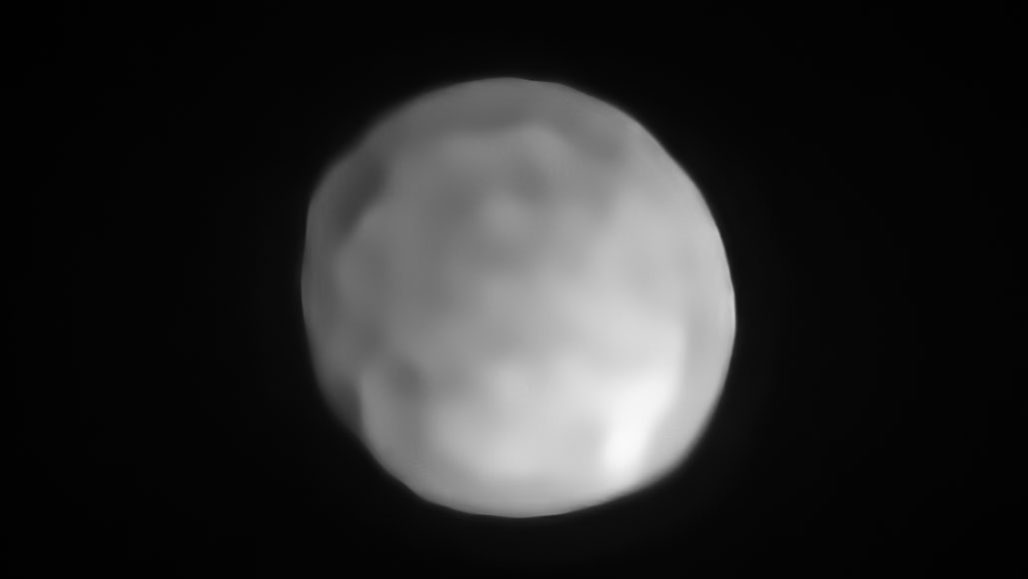 The solar system may have a new smallest dwarf planet: Hygiea
The solar system may have a new smallest dwarf planet: Hygiea
New images reveal the wee world is round, a final criterion for dwarf planet status
The asteroid belt object known as Hygiea may be the new baby of the dwarf planet family.
Hygiea, currently classified as an asteroid, already met three of four requirements for dwarf planet status: It orbits the sun. It isn’t a moon. And it hasn’t swept its orbital path clear of other space rocks, the way fully fledged planets are able to. Now, new telescope images reveal that Hygiea is nearly spherical, which checks the last box to qualify as a dwarf planet.
If officially reclassified by the International Astronomical Union, Hygiea would join the handful of dwarf planets, including Pluto, in our solar system (SN: 5/25/18). About 430 kilometers across, Hygiea would unseat Ceres, with its 950-kilometer diameter, as the smallest dwarf planet discovered in our solar system, researchers report online October 28 in Nature Astronomy.
High-resolution images from the Very Large Telescope in Chile confirmed that Hygiea is about as round as Ceres — and that its surface isn’t marred by a huge impact basin. That was a surprise for the researchers, led by astronomer Pierre Vernazza of the Laboratoire d’Astrophysique de Marseille in France. They had expected to see an enormous crater from a collision billions of years ago that formed Hygiea’s entourage of over 6,800 small asteroids. By comparison, the asteroid Vesta sports a huge scar from the formation of its own, smaller asteroid swarm.
Computer simulations run by Vernazza’s team offer a possible explanation: More than 2 billion years ago, a space rock about 100 kilometers across completely shattered Hygiea’s parent body. When most of the remnants clumped back together into the space rock now known as Hygiea, they formed the smooth, spherical body seen today. By contrast, Vesta — about three times as massive as Hygiea and struck by 65-kilometer object — merely had some of its material carved out, leaving behind a big divot.
0 comments :
Post a Comment